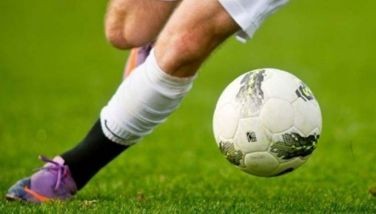Seeing the past in the Galleon Andalucia

Yesterday before noon, I huffed over to Pier One to see a replica of a Spanish Galleon, dubbed “Galleon Andalucia”. Call it a boyhood dream that I would someday see a Tall Ship; that’s what they were called in the era of the sailing ships long before the internal combustion engine was discovered. We were on board the Galleon Andalucia with Gov. Gwen Garcia, Mayor Michael Rama, Councilor Margot Osmeña and Hon. Consul Jaime Picornell of Spain. Looking at the back of the Galleon, you could see the Spanish flag flying proudly. A long time ago, the Spanish flag flew proudly here in Cebu and the rest of the Las Islas Filipinas. Now it flies here for cultural ties.
It is not everyday that Cebuanos are given a glimpse of history. Spanish galleons are very much a part of our history, as Cebu was part of the Archdiocese of Mexico and we were very much in the famous Galleon Trade with Manila, Cebu and Acapulco. Of course the difference then was, Cebu did not even have a port in those days. One of the old pictures that you can see in the Fort San Pedro is a sailing ship anchored off the seashore. Indeed, galleons anchored off the seashore and brought their goods via long ships which they rowed into the esteros of Cebu. This is why Colon St. became a center of commerce as the goods from the galleons are unloaded in the esteros.
The media also clambered aboard the wooden vessel and when I heard a TV reporter say that it was a replica of the ship of Magellan, I had to cut her off to give her some lessons in history, that Ferdinand Magellan used four Spanish Carracks and a Caravel, while the galleon trade happened more than a hundred years after Magellan had died.
Magellan’s ships were the Victoria, San Antonio, Concepcion, Santiago and the Trinidad. Except for the Trinidad which was a Caravel, all of Magellan’s ships were called “Spanish Carracks.” Few people realize that in those days, people like Magellan were the astronauts of their day and the Carracks they used were like today’s spaceships, which go to the unknown world, fearing that they won’t ever return.
The Galleon Andalucia is a replica of the Galleon Trading that sailed the Pacific Ocean in the 17th Century, a hundred years after Magellan came to the Philippines. The Spanish Galleon trade also included Macao and other Chinese ports. This is why the Galleon Andalucia also went to Shanghai Expo 2010 to give the expo visitors a lesson in Spanish history when they traded goods with the Philippines and China. In short, Spanish Galleons were huge cargo ships. In fact, Mandaue was once a place where Spanish Galleons were made.
This particular Galleon is named Andalucia after one of the autonomous Provinces of Spain (They are Federal States, but they call their States Provinces) which has Seville as its capital, but its other cities are also known to us like Cordoba, Cadiz and Granada. Seville has the Guadalquivir River, where the fleet belonging to the Armada de Moluccas commanded by Ferdinand Magellan began its voyage of exploration. While Magellan did not join the fleet in Seville, he boarded the Victoria in San Lucar de Barrameda at the mouth of the Guadalquivir River.
Of course, the Galleon Andalucia is a replica of the original Spanish Galleon; however, due to certain maritime safety measures, the vessel is in reality a modern vessel complete with high-tech navigational devices (although they have a replica of the astrolabe that was used in the old sailing days). It also sports a modern engine room with two main engines. In short, the crew doesn’t need to unfurl the sails to get underway.
The Galleon Andalucia is a great cultural, economic and artistic heritage and strengthens the ties between Spain and its old colony. Magellan’s coming to the Philippines was not to convert the Indios into Christians. Rather his main objective was to find the Spice Islands somewhere in the Moluccas; hence they were called Armada de Moluccas.
What few people including historians do not realize is that the galleon trade is the starting point for Filipinos to be among the world’s greatest seafarers. People say that in the maritime world today, 30% or higher are Filipino crewmen. But the seafarers of today had their ancestors onboard Spanish Galleons. In the book “The Manila Galleon” William Lytle Schurz wrote that the ratio of Malay and Indio crew in the galleon was one out of five. We were called Indios then. Whenever a galleon loses its crew through desertion or death, the ship captains couldn’t find Spaniards to replace the crew, hence Malays or Indios were put to service in the galleon trade and they learned their craft very well, from fixing riggings to the use of a compass.
See the vessel Galleon Andalucia today and see history unfold right before your eyes!
- Latest
- Trending




























